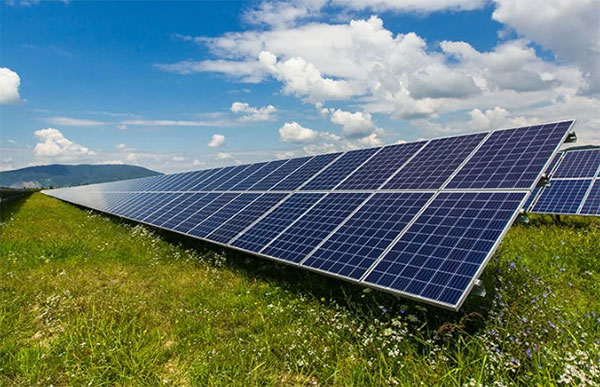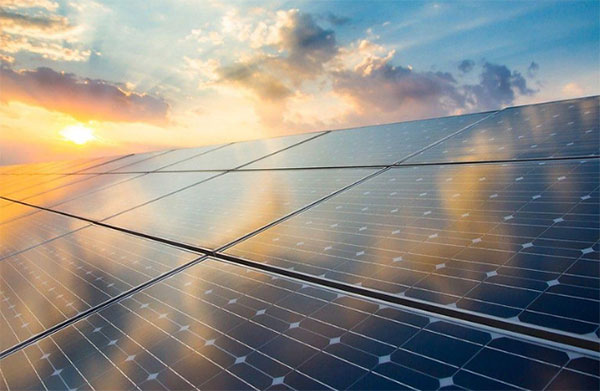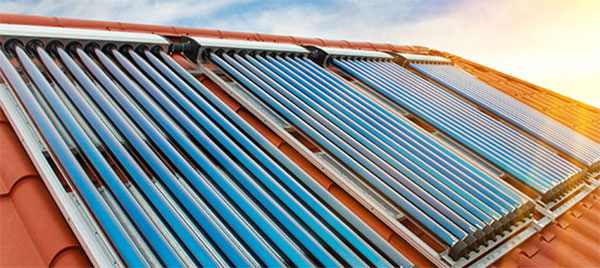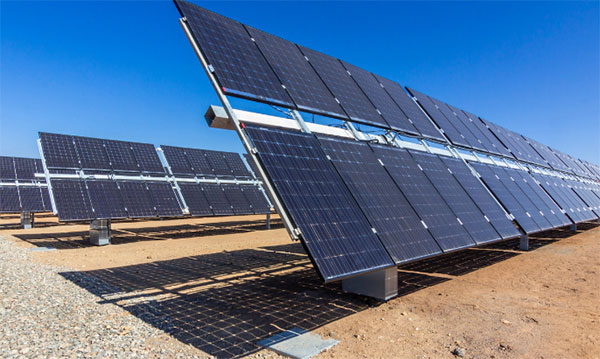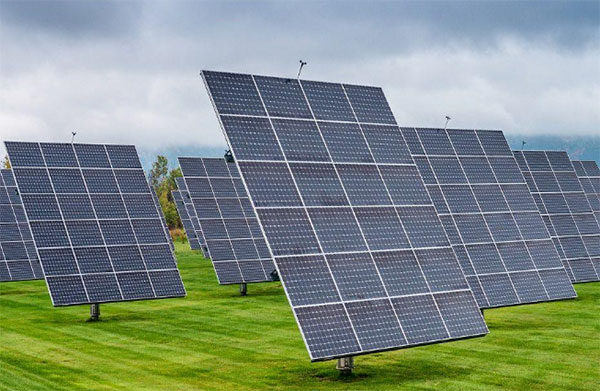Description
The PN junction is at the heart of a traditional solar cell, which is responsible for the ability to convert sunlight into electricity. This junction is created by the intersection of P-type (positive) and N-type (negative) semiconductor material, which together form a field critical for photovoltaic activity.
How traditional PN Junction solar cells work
Traditional solar cells rely on the semiconductor qualities of materials such as silicon to perform the photovoltaic effect. When sunlight strikes the solar cell, the semiconductor absorbs the photons which excites the electrons and creates electron-hole pairs. These electrons and holes would simply scatter about the material, except for the electric field that is created at the PN junction. The electric field causes the electrons and holes to be separated and to flow in opposite directions, thus creating an electrical current.
Key parameters and efficiency
Material Efficiency: The maximum theoretical efficiency of silicon – the most common material found in solar cells – is about 29%. In practice, commercial silicon solar cells achieve efficiencies in the range 15% - 22%.
Cost Considerations: The cost of silicon solar cells, which represent the vast majority of solar cells currently installed, have decreased dramatically over the past decade and currently run in the $0.20 to $0.50 per watt. This reduction in cost is due to advances in manufacturing technologies and economies of scale.
Lifespan and Durability: Silicon solar cells are known for their longevity, with many panels guaranteed to perform at more than 80% of their original efficiency after 25 years.
Significance of PN Junction in energy conversion
The ability of the PN junction to create an electric field without any external voltage - something that occurs in the solar cell - is what allows the solar cell to work. This field is important as it causes the free electrons, created in the electron-hole pair from the sunlight photon to move in one direction (thence they ultimately do work to power a load), and the hole to move in the opposite direction. The electric field also helps to separate these electron-hole pairs so that they can flow out of the solar cell and form direct current (DC) electricity.
Advantages of PN Junction Solar Cells
High Reliability: The simplicity of the PN junction solar cells make them of high reliability and low maintenance technology.
Wide Availability of Materials: The primary material used in these cells, silicon, is the second most abundant element in the Earth’s crust, making it a prime raw material for solar cell production.
Material and Performance Optimization
In their quest to physically improve the performance of these devices, manufacturers add anti-reflective coatings to the surface of the solar cell and optimize the thickness of the semiconductor layer. Both of these steps will improve light absorption in the solar cell and decrease electronic recombination losses.
Alternative Technologies to PN Junction Solar Cells
As the demand for renewable energy sources intensifies, researchers and engineers are exploring beyond traditional PN junction solar cells to discover more efficient, cost-effective, and versatile photovoltaic technologies. Among these emerging alternatives are Dye-Sensitized Solar Cells (DSSCs), Quantum Dot Solar Cells (QDSCs), and Organic Photovoltaic Cells (OPVs), each with unique mechanisms, advantages, and challenges.
Dye-Sensitized Solar Cells (DSSCs): Working Principle and Components
Dye-Sensitized Solar Cells (DSSCs) represent a significant shift from conventional solar technology. They operate on the principle of sensitizing anode with dye molecules, which absorb sunlight and generate electrons. A key component of DSSCs is the titanium dioxide (TiO2) layer coated with a photosensitive dye that captures sunlight and initiates the electron transfer process.
Efficiency and Cost
-
Efficiency: DSSCs typically exhibit efficiencies around 11-14%, which is lower than the best-performing silicon-based cells but competitive in low-light conditions.
-
Cost: The materials and manufacturing processes of DSSCs are less expensive than those of traditional silicon cells, making them a cost-effective alternative in specific applications.
Advantages include their ability to perform under low light conditions and their flexibility, which allows them to be applied on various surfaces. However, their sensitivity to UV light can affect long-term stability, which is a significant challenge for outdoor applications.
Quantum Dot Solar Cells (QDSCs): Mechanism and Potential
Quantum Dot Solar Cells (QDSCs) utilize nanocrystals, or quantum dots, made from semiconductor materials. These dots are small enough to exhibit quantum mechanical properties, allowing them to absorb a wide spectrum of light, including infrared.
Efficiency and Innovations
-
Efficiency: Current research QDSCs have reached efficiencies over 10%, with theoretical potential exceeding 30% due to multiple exciton generation.
-
Innovation Potential: The tunable bandgap of quantum dots means that QDSCs could potentially be customized for different light conditions, enhancing their adaptability and efficiency.
The major advantage of QDSCs lies in their ability to capture a broader spectrum of sunlight compared to traditional solar cells. A challenge is the use of toxic materials like lead and cadmium in quantum dots, raising environmental and health concerns.
Organic Photovoltaic Cells (OPVs): Structure and Operation
Organic Photovoltaic Cells (OPVs) use organic molecules or polymers to convert solar energy into electricity. Unlike traditional solar cells, OPVs can be fabricated using roll-to-roll printing processes, making them potentially low-cost and flexible.
Efficiency and Economic Aspects
-
Efficiency: OPVs have achieved efficiencies in the range of 10-13% in laboratory settings, with ongoing research aimed at crossing the 15% threshold.
-
Cost-Effectiveness: The potential for low-cost production and the use of abundant materials make OPVs an attractive option for large-scale deployment.
Comparative Analysis of Solar Cell Technologies
Over the past few years, research and development efforts devoted to addressing the need for more efficient, cost-effective, and sustainable solar cell technologies have been various and have progressed at a rapid pace. Relative to the traditional PN junction technology, experimental non-PN junction technologies such as the Dye-Sensitized Solar Cells (DSSCs), Quantum Dot Solar Cells (QDSCs) and Organic Photovoltaic Cells (OPVs) differ significantly with regards to efficiency, material, and fabrication costs.
PN Junction vs. Non-PN Junction Solar Cells
PN Junction Solar Cells:
Efficiency: Silicon based crystalline electronic grade wafers have proved to be the most successful material for fabricating solar cell, enabling the production of cells with efficiencies of up to 22% in commercial products, and above 26% in laboratory examples.
Stability: Silicon solar cells are noted for their long-term stability, typically maintaining their rated efficiency for over 25 years.
DSSCs:
Efficiency: DSSCs generally exhibit efficiencies in the 11-14% range, with the highest laboratory efficiencies approaching 14%.
Advantages: DSSCs have gained attention for their superior performance under low light conditions, and flexible forms, e.g., ft textiles (FT) and organic PV (OPV).
QDSCs:
Efficiency: Demonstrated efficiencies of QDSCs in the laboratory scale have reached about 13%, but research is on going with the potential to exceed this figure.
Potential: QDSCs can absorb a broad spectrum of light, enabling potential high efficiency.
OPVs:
Efficiency: Efficiencies of OPVs have been demonstrated in the laboratory scale with figures up to 12%, and these are constantly improving.
Flexibility & Weight: OPVs’ light weight and flexible design present both excellent resistance to the elements and a transformative potential lead to new applications, such as wearble solar technology.
Material and Fabrication Cost Analysis:
Silicon Solar Cells:
Cost: The cost of silicon solar panels has fallen precipitously from $1.00 to the 1977 to$0.20 to $0.50/w today. This cost reduction has been instigated by both the refinement of manufacturing techniques and the scaling up of production. The latter has been dominated by Chinese companies, which have been able to bid production equipment to lower costs, as well as by cheaper manufacture leading to economies of scale.
Materials: Although the purification process is a major contributor, silicon’s abundance is a hallmark of its sustainability.
DSSCs:
Fabrication Cost: In principle or practice DSSCs can be fabricated using simpler processes and at lower temperatures than the silicon cells, thus reducing production costs.
Materials: The use of organic dyes combined with conductive polymers, however, may prove to be problematic in terms of performance reliability and lifetime—critical barriers to long-term cost effectiveness.
QDSCs:
Material Costs: QDSCs require unique, and potentially more expensive materials, including the all important quantum dots, but their overall efficiency potential could ultimately justify their use and expense.
Fabrication: Advances in fabrication, such as the development of truly printable electronics, can substantially lower costs, which will have to be the case before any of these non-PN junction cells will be able to seriously compete with silicon in the flat plate solar panel arrays that dominates the market today.
OPVs:
Low Production Costs: OPVs could benefit from inherently low production costs because of the abundant availability of raw materials and the cells' compatibility with cheap roll to roll processing, which will account of economy of scale.
Material Advantages: Organic materials characteristic of OPVs are often lightweight, flexible, and adaptable to many creative designs for everyday applications, though organic materials face major challenges in terms of durability and performance over time.

